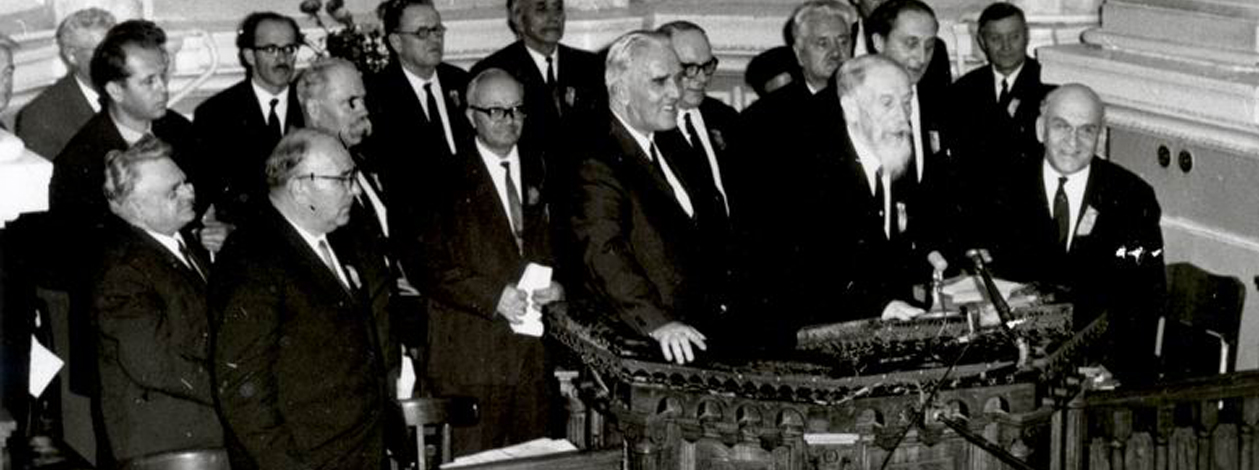When Winston Churchill first spoke of the iron curtain in 1946, a quarter of a million Soviet citizens were registered as members of the Evangelical Christian-Baptist Union; by the time the curtain was lifted in 1991, that number had jumped to 1.5 million. The religious renaissance of the late and post-Soviet periods took the world largely unawares: How had faith survived the atheist onslaught? Why had people turned in such large numbers to the church? What does this tell us about the process of ‘secularization’?
During the Cold War, the West saw Christians in the Soviet Union as potential allies against the communist regime, particularly Baptists and Pentecostals. The Soviet authorities were, of course, displeased by the overtures of overseas religious groups and targeted Protestants as lackeys of the West. By the Khrushchev era ‘sectarians’, as the state labelled them, were passionately demonized. Despite this persecution, Protestant communities not only survived, but even grew. This project explores how a sense of spiritual quest characterized the religious consciousness of many Russian and Ukrainian citizens, particularly in the traumatic wake of the Second World War. It asks why Protestantism became the spiritual refuge of choice for growing numbers of Soviet men and women. This has important implications for the Soviet project as a whole because it explores the limits of the state attempt to shape the ‘new Soviet person’ and the potential for alternative worldviews and beliefs to exist and even thrive within the USSR.
The AHRC has provided funding for four years which will allow extensive collaboration between the principal investigator (Miriam Dobson) and colleagues in Moscow (Nadezhda Beliakova and Aleksei Sinichkin). During this time, we will be working to collect archival materials and record oral testimony from believers in four regions: Moscow, Kiev, Chernovitsi, and Voronezh. The project will result in three kinds of output: a website in both Russian and English allowing users access to selected archival documents and interview transcripts; a collection of documents relating to the history of Protestantism in the Soviet Union (in Russian); and a series of academic articles and a monograph (in English).
Website
Project Team
- Dr Miriam Dobson (Principal Investigator – University of Sheffield)
- Nadezhda Beliakova (Research Associate, Moscow)
- Aleksei Sinichkin (Research Associate, Moscow)
- Ryan Bloor (Developer – The Digital Humanities Institute)
